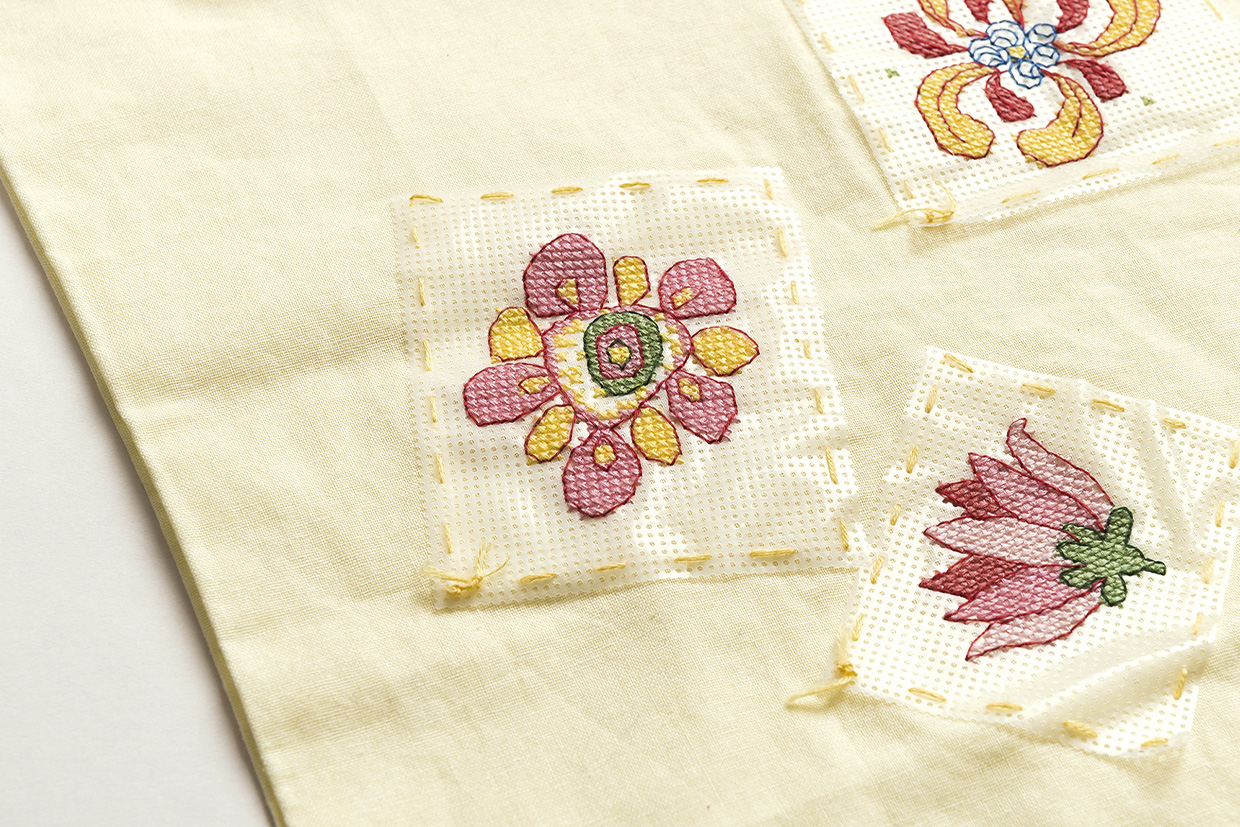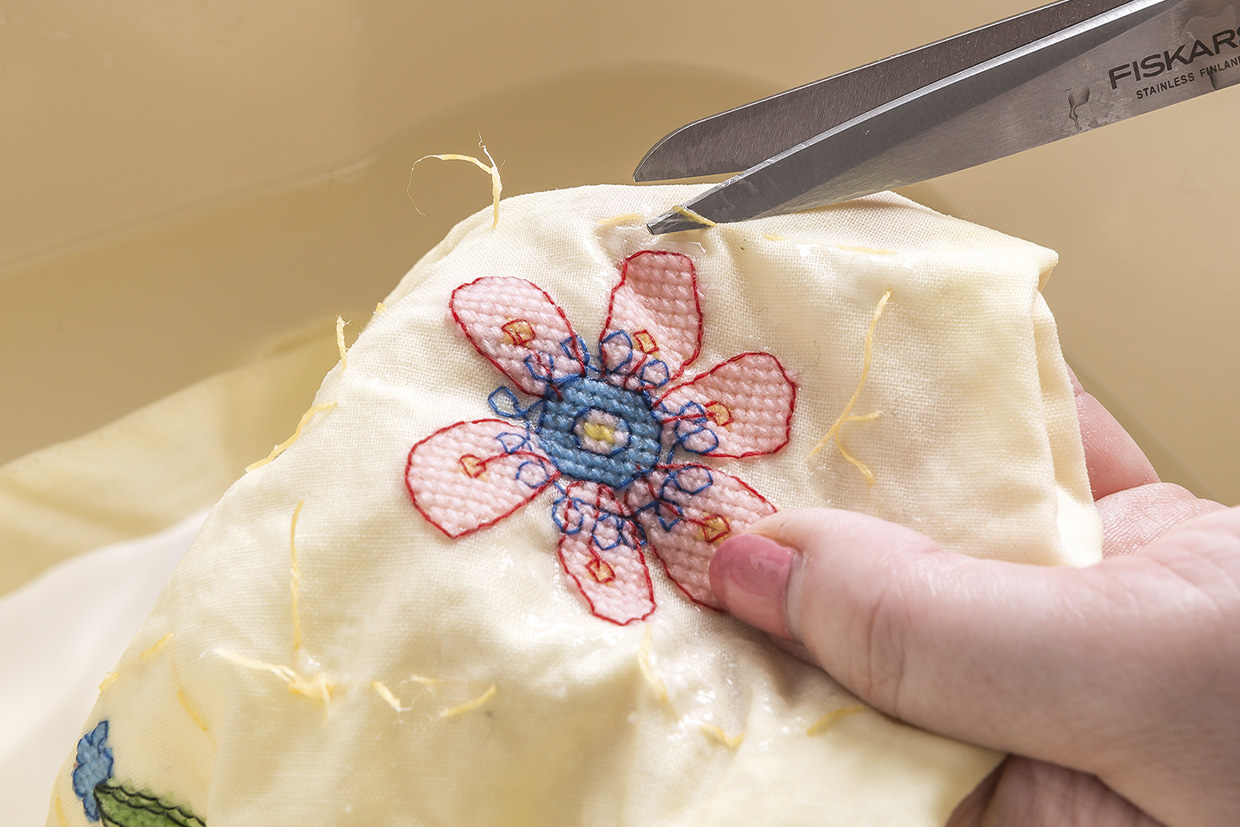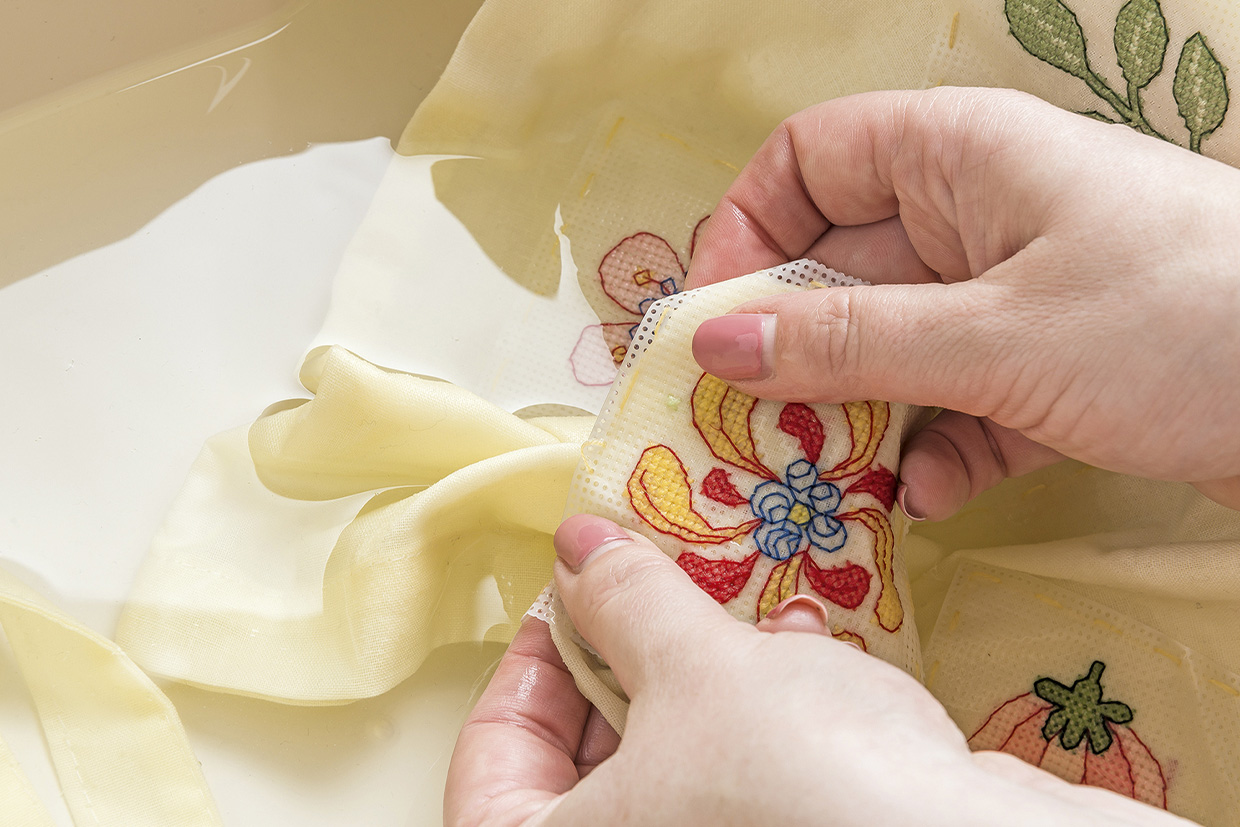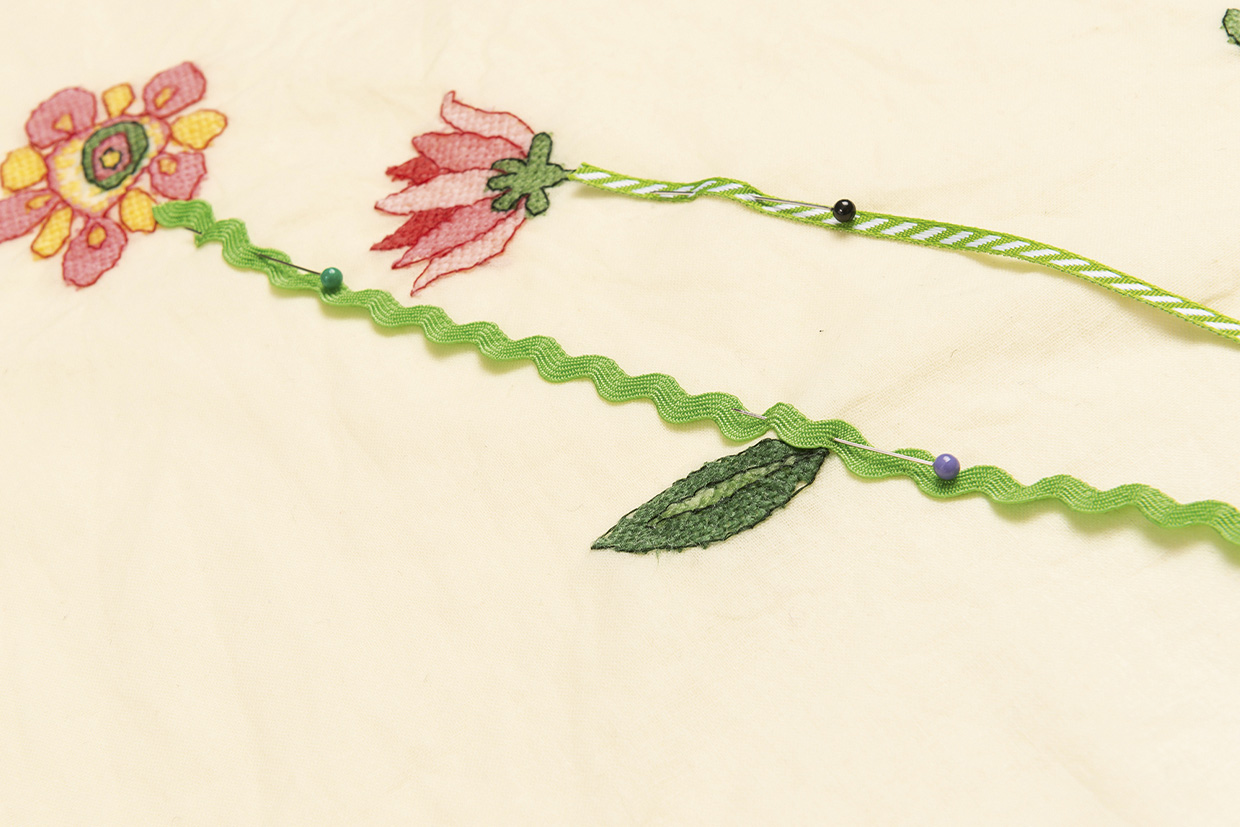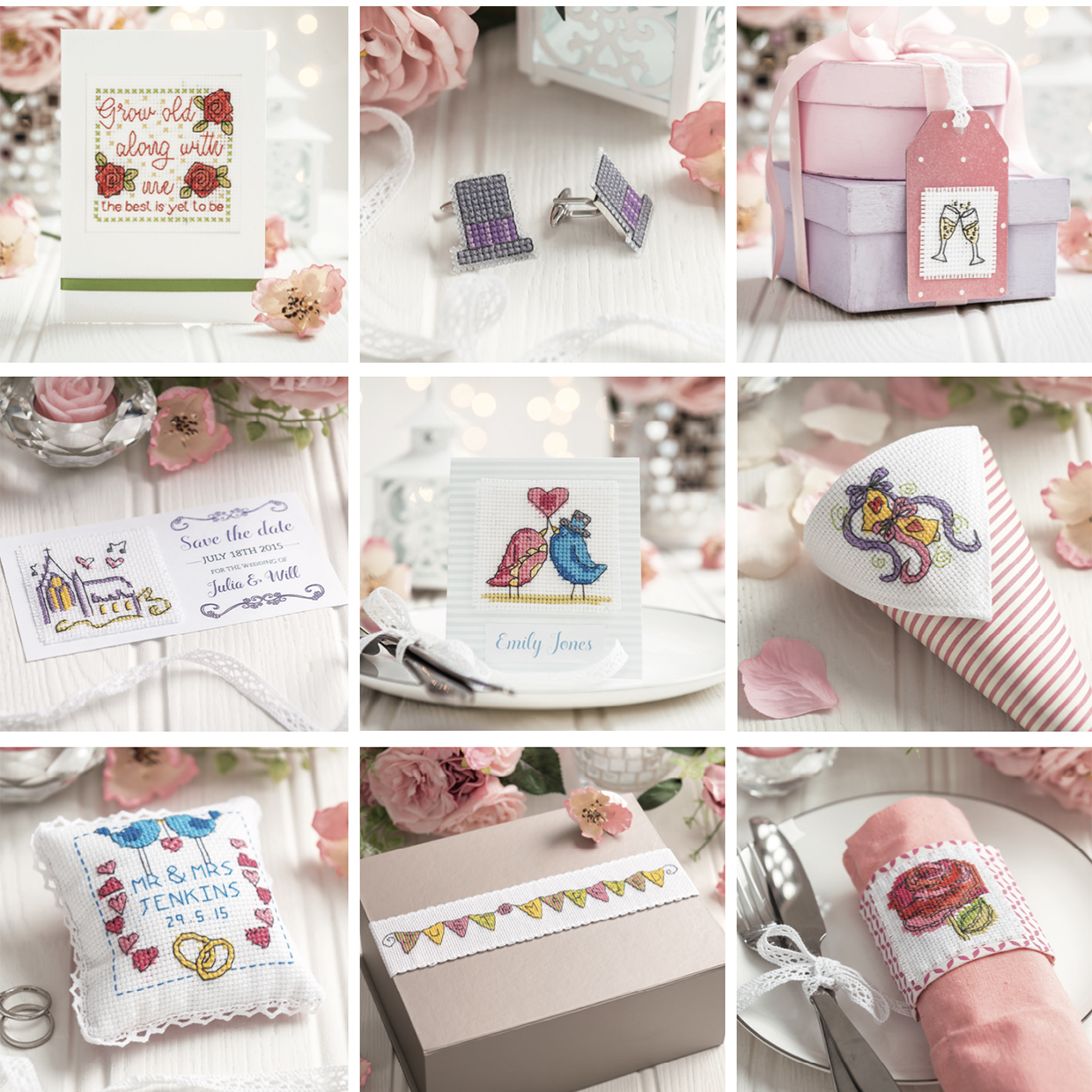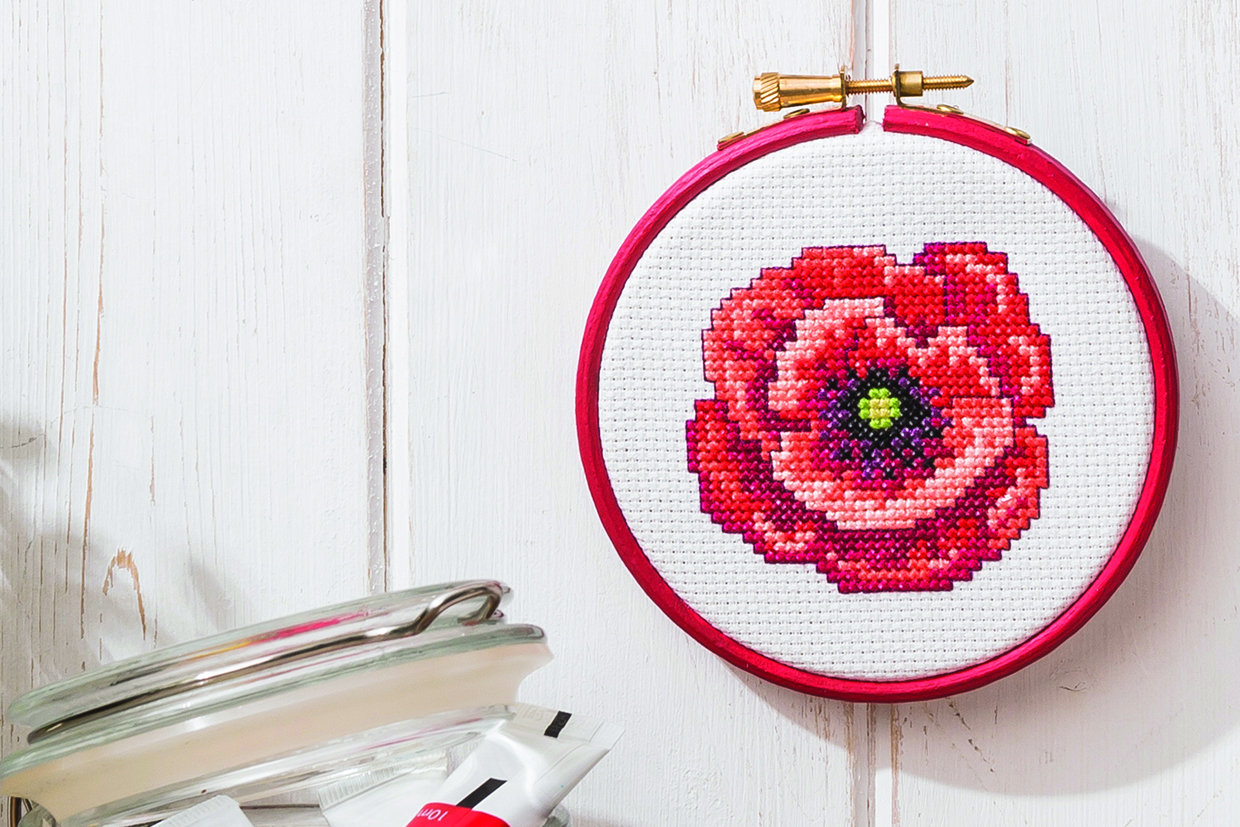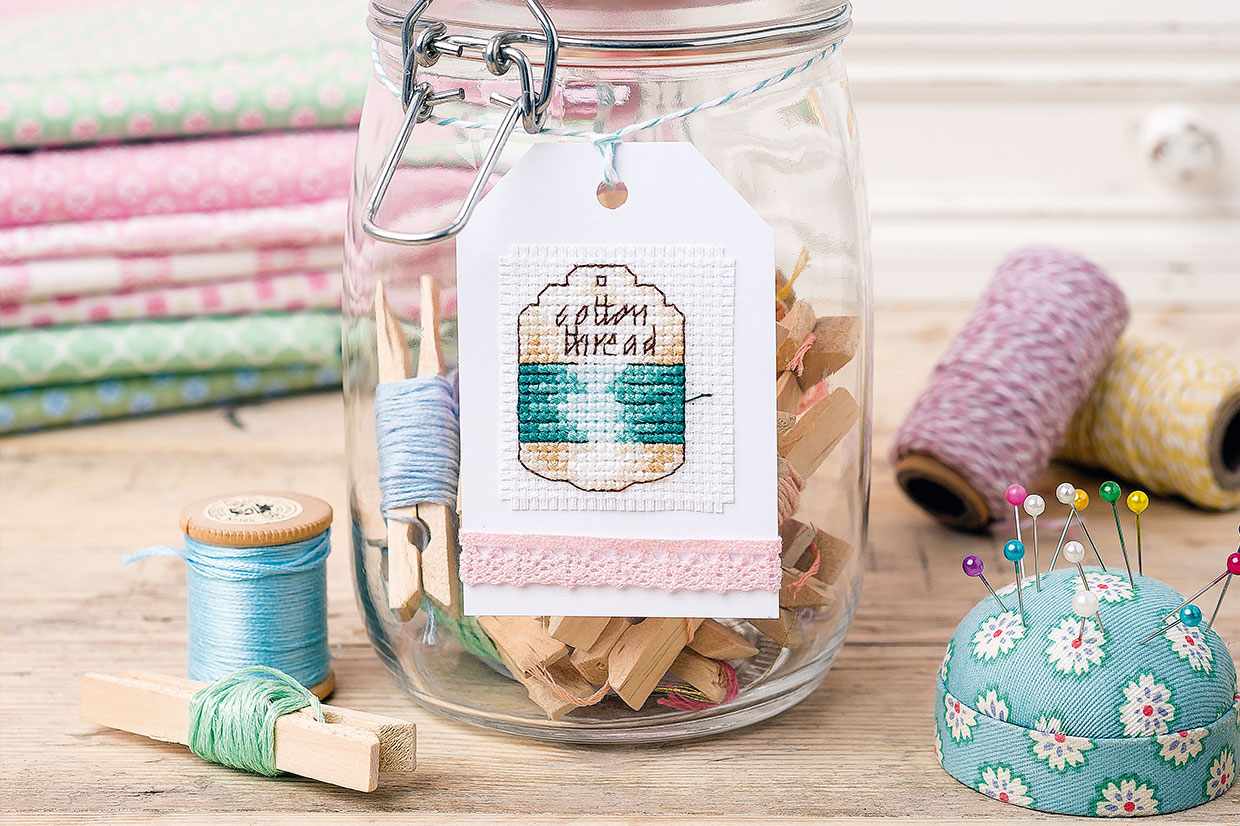How to cross stitch on clothes and tote bags
Adding cross stitch on clothes is a popular way to freshen up your wardrobe or create on-trend statement pieces to wear and be the envy of all your friends! If you’ve found the perfect pattern you’d like to cross stitch on clothes or other textile items, or looking for inspiration to try it for the first time, then we have the ultimate guide to getting started.
While cross stitch is traditionally worked on evenly woven fabrics, such as aida or evenweave, you can actually cross stitch on any type of fabric with the right know-how. This opens up a host of possibilities to cross stitch on t-shirts, jeans, skirts, jackets, bags and a whole lot more. You just need a method of gridding the fabric to create the evenly spaced holes you find on the usual cross stitch fabrics.
There are two different methods you can use, explained below. For this project, where you will learn how to create your own tote bag, we will be using soluble canvas.
How to use soluble canvas
This is where DMC Soluble Canvas comes in! This water-soluble canvas is gridded in 14-count holes, making it the exact same size as stitching on 14-count Aida or 28-count evenweave fabrics.
Using soluble canvas is easy - it works like a template to create the correctly positioned holes on any fabric. Stitch exactly as you would normally through the holes in the canvas, right through to the fabric beneath. Once you are finished stitching, place the finished design in a bowl of warm water and the canvas disappears!
Top tip: Only work in whole stitches and backstitch - do not use fractionals or French knots to avoid ‘piercing’ the plastic guide. Remember to look for fractional-free designs when choosing your cross stitch pattern.
How to use soluble canvas video tutorial
What is waste canvas?
DMC Waste Canvas is another material you can use to cross stitch on clothes. It works in a similar way to the soluble canvas by creating a grid over your garment fabric when tacked on top.
Waste canvas is available in a couple of different counts and is removed by wetting and very carefully pulling the strands of fabric weave out from the edges of the stitched motif one at a time. It’s a more time-consuming method than using soluble canvas, but you could give it a try and decide which you prefer.
Cross stitch your own tote bag step-by-step using soluble canvas
We’ll show you just how easy it is to cross stitch on clothes and other textile items by making your very own customisable floral tote bag with these fabulous free charts designed by Jenny Barton.
For this project you will need soluble canvas and a cotton tote bag to begin. Follow our step-by-step guide to make your floral cross stitched bag that you could use to carry your stitching wherever you go.
We recommend always using an embroidery hoop when cross stitching on clothes, as it’s important to keep the tension of the garment or bag material flat and even.
Fact box:
- Stitching Time - Approx. 2-5 hours per motif
- Type of Stitches - Cross stitch, backstitch
- Ease of Stitching - Intermediate
Tote bag cross stitch pattern
Click the link to download the free tote bag cross stitch pattern. The download is an A4 PDF and an accompanying key.
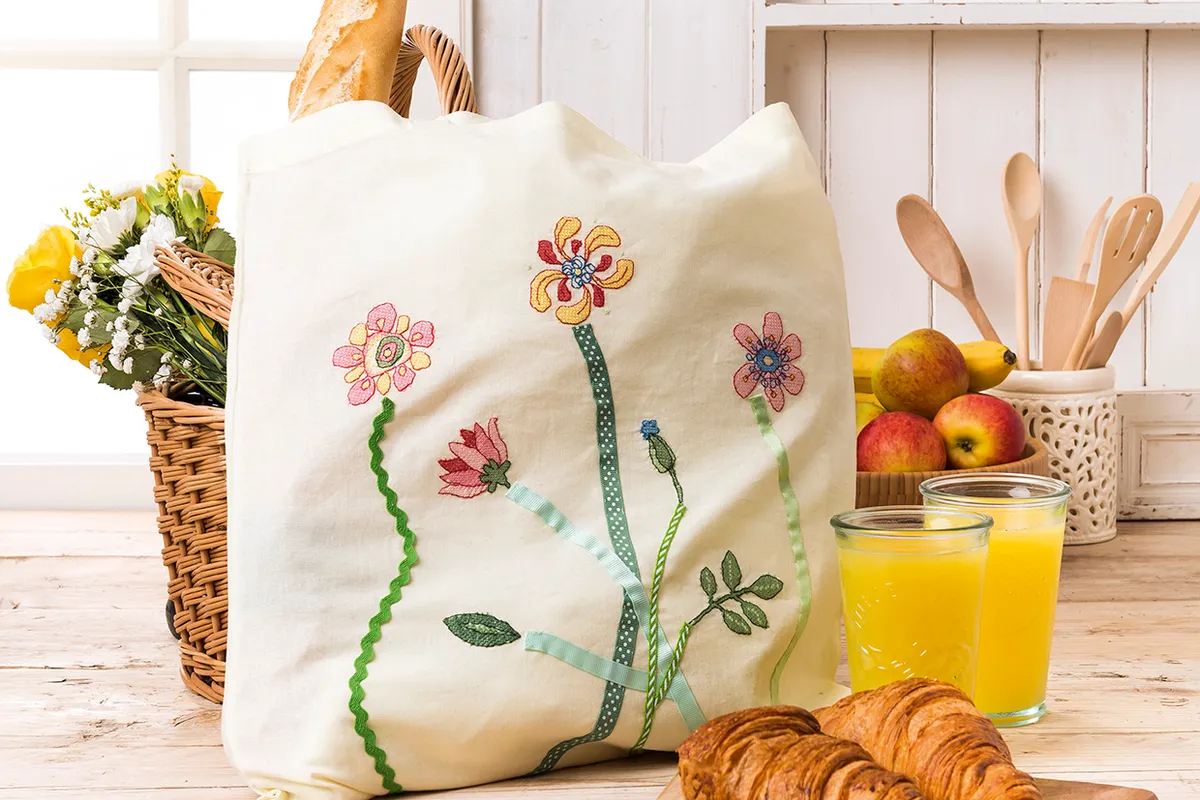
This cross stitch tote bag design was created by Jenny Barton, originally published in The World of Cross Stitching issue 243.
If you’re new to cross stitch, check out our complete guide to cross stitch for beginners. You can also find out more about how to choose the best fabric.
